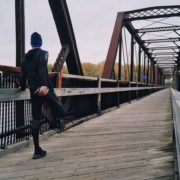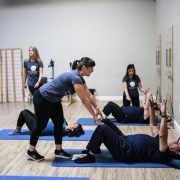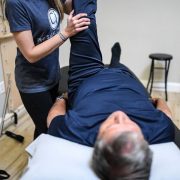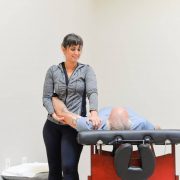When You Can’t Feel Your Abs
I’ve been a physical therapist for 20 years, a Pilates instructor for 11, and have been specializing in back pain for the past 10 years of my career. When it comes to core strength and preventing back pain, I am an expert in my field. Yet for some reason this morning, during my Pilates workout, I just couldn’t feel my abs. I teach people how to do this every single day yet this morning, I couldn’t seem to access my own.
What was happening?
And more importantly – if it can happen to someone like me – it can certainly happen to someone with less training than I have. I started to think about all the reasons this could be happening to me. Had I gotten enough sleep? What had I eaten the day before? Could it be stress?
And then it hit me.
I had just come back from a 2-day course where I’d been sitting far more than usual. I sat for 8 hours straight. Two days in a row. Not to mention all the very cramped sitting I did on the plane to and from this course. When one of my clients is about to have a few days like this, this is what I recommend. Get up from your chair and stretch backwards as frequently as possible every few hours.
But guess what – I didn’t follow any of my own advice. The result? A stiff back and sleepy abs upon my return.
Our bodies are highly intelligent and have every capacity to heal themselves when given the right environment. Conversely, when in the wrong environment, our bodies will also do what it takes to naturally protect from harm and injury. In my case, I came home from this course with a stiff lower back.
Back stiffness is the first sign that your back is not happy. This means your chances of tweaking it or exacerbating an old back injury are higher. When any joint is stiff and not moving well the muscles surrounding that joint will become naturally inhibited or weakened. This occurs on purpose as a protection mechanism. Your body doesn’t want a fully contracted muscle compressing an unhappy joint. In the case of your lower back, the muscles that can get inhibited when your back is not happy include your abdominals as well as back muscles.
So what can you do when you feel less core strength?
The good news is I’ve already helped you with step one: awareness. Inhibited muscles are not the same as weak muscles. In my case, I do have strong abdominals. My weekly routine consists of a regular Pilates practice, lifting weights, and I perform activities like hiking and running that engage my core. Yet despite all this, my abs were simply not having it this particular morning. They were not set up for a successful workout.
The combination of my stiff back and having sat for several days just meant that I needed to do something different to prepare my lower back and abdominals for this workout – so that I wouldn’t injure myself. My sleepy abs and stiff back were, in effect, trying to tell me just that.
All I needed to do was have the awareness this was happening so I could take appropriate action.
It’s no different than when you go on vacation and you get off your routine by eating more than usual. You might return a bit bloated and not feeling your best self. This kind of feeling we are accustomed to. And might respond by getting a bit strict with our diets until feeling back on track. Our joints can react similarly to a change in routine – we’re just not as accustomed to the signs and symptoms that let us know. But once you are – you can easily manage this and avoid injury. Had I pushed through my Pilates routine as normal this morning despite sensing that my back and abdominal function was off – there’s a good chance I’d be sitting here writing to you with full on back pain instead of just some lingering stiffness.
If you’re reading this, and you’re over the age of 40, odds are pretty good that you’ve experienced back pain at some point in your life. The odds are also pretty good that you’ve experienced back pain more than once.
If this is a recurring pattern for you, your abdominals and deep core may not be functioning at their best.
You could be caught in a vicious cycle of trying to improve your core strength only to keep hurting your back.
The missing solution for you might be that nobody has fully examined your back in a way to ensure that it’s moving fully and freely like it should. Once your back moves well, you can usually start to strengthen your abdominals without a problem.
If you’re confused right now – I don’t blame you.
The take home point here is that if you keep experiencing weakness in a particular area despite trying to strengthen it consistently, it’s possible you could have a problem in your joints that is keeping your muscles from fully activating like they should.
Talk to one of my specialists about it.
Someone from my client success team will call you right away and see if you are a good fit for what we do. At the end of the day – we’re here to help.
Dr. Carrie Jose, Physical Therapist and Pilates expert, owns CJ Physical Therapy & Pilates in Portsmouth and writes for Seacoast Media Group. To request a free copy of her guide to back pain CLICK HERE or to get in touch, email her at [email protected].












